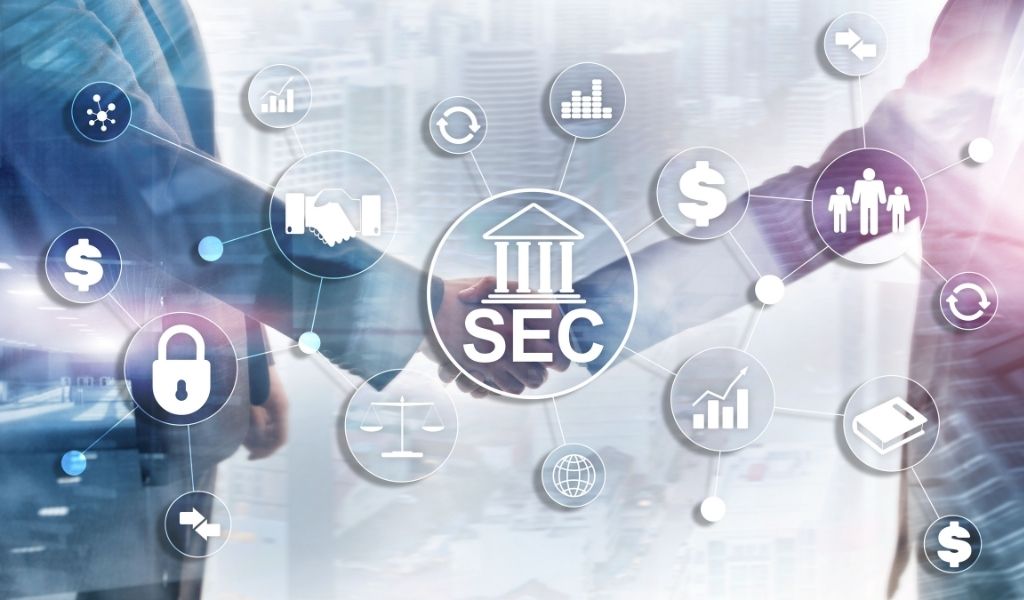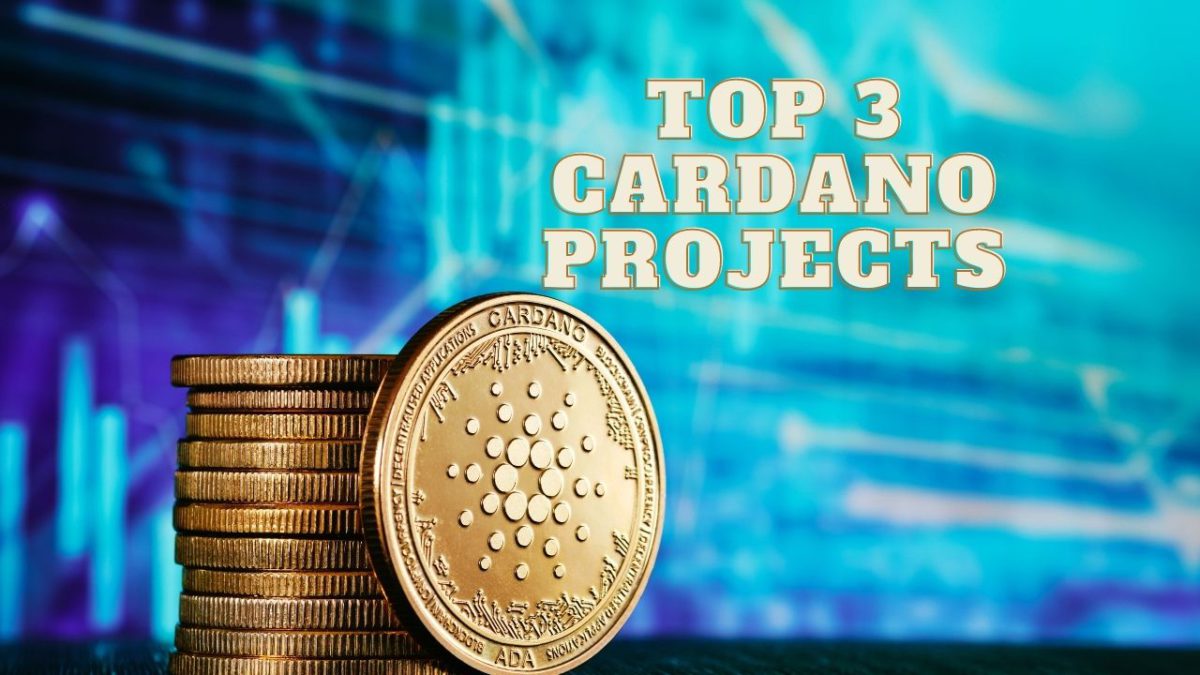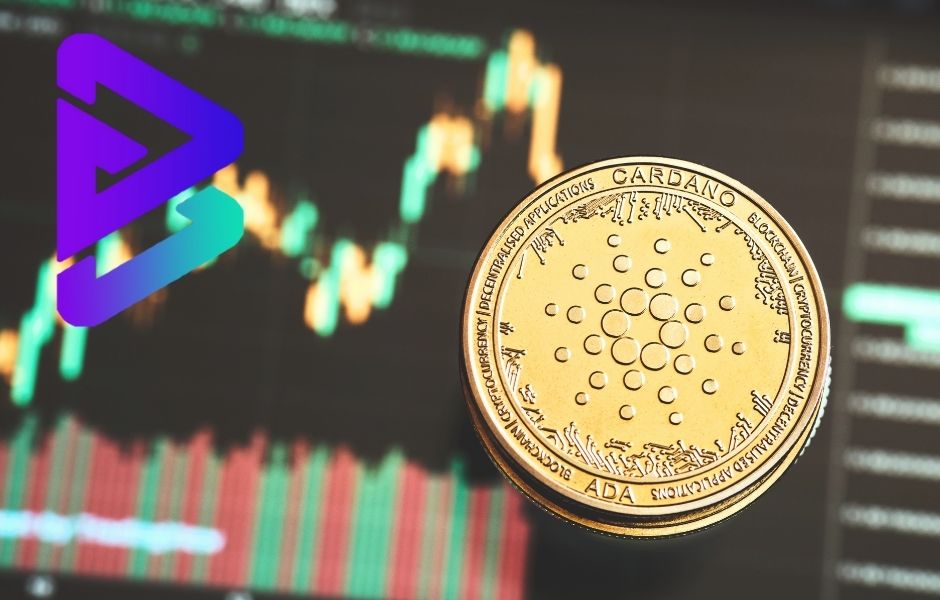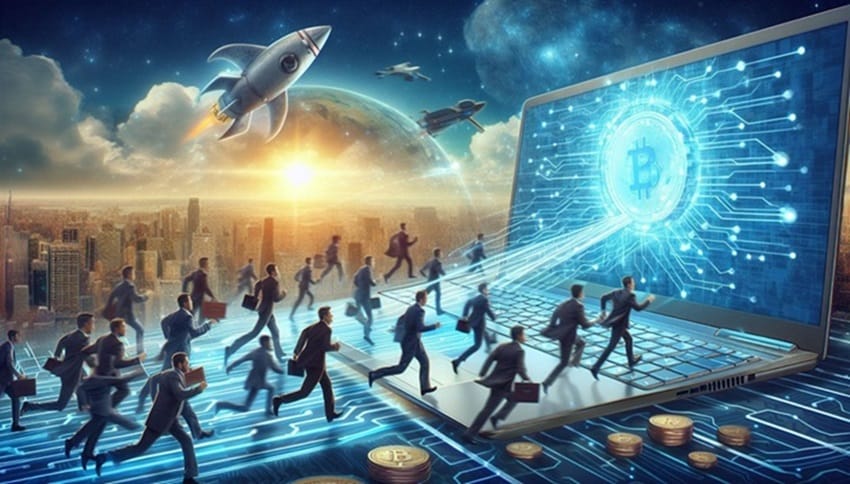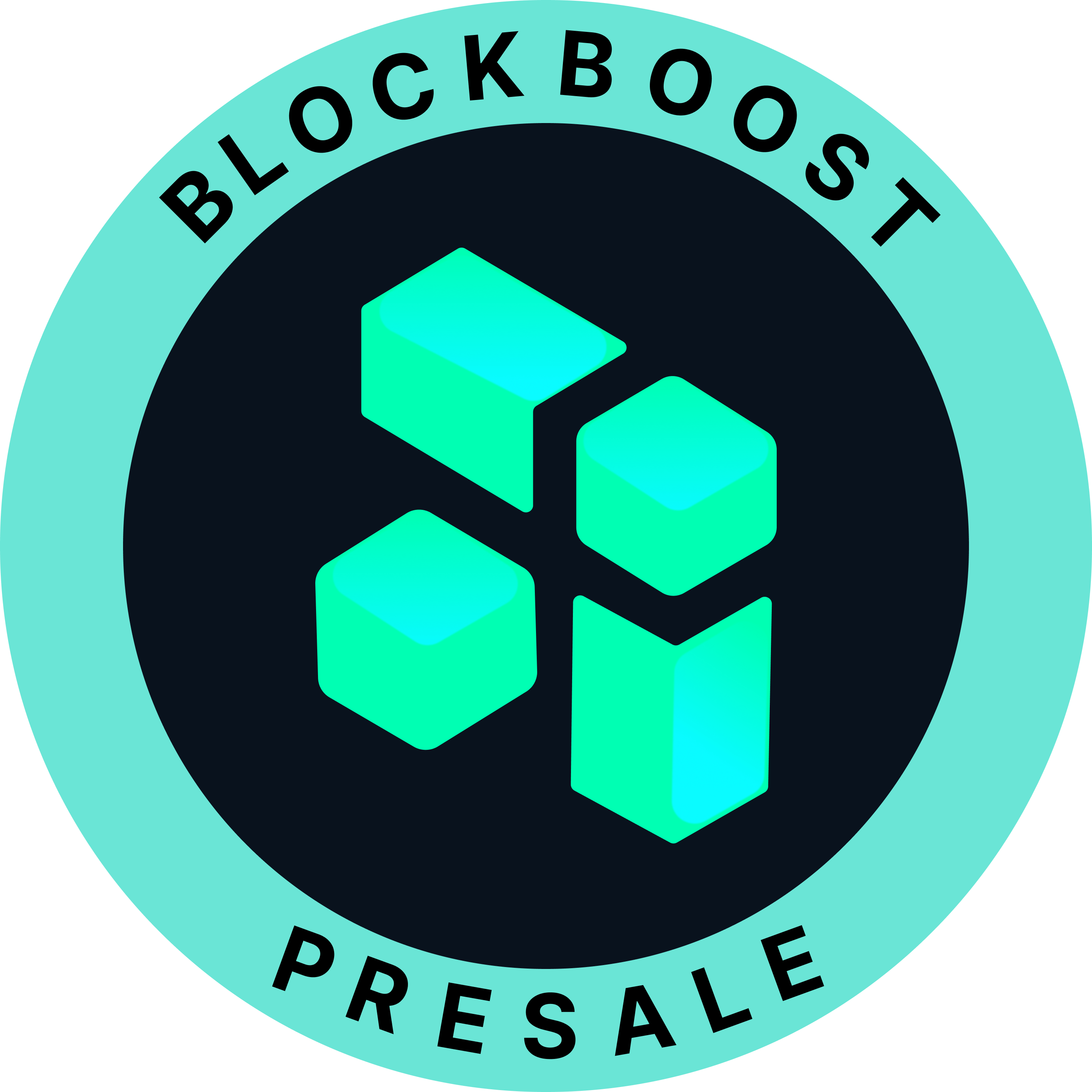Real-World Assets (RWA) Tokens: Bridging Physical Assets and Blockchain
Alright, so you’ve heard about blockchain and crypto, right? But what about real-world assets, or RWAs, getting in on the action? It’s a pretty big deal. Think about it: stuff like real estate, art, or even machinery being represented by digital tokens. This isn’t just tech mumbo jumbo; it’s about making these assets easier to trade and manage. The whole idea is to bring the physical and digital worlds closer together. And guess what? This could change how we handle investments and finance forever. Let’s dive into what RWA crypto is all about and why it’s catching everyone’s attention.
Key Takeaways
- RWAs are real-world assets like property or art, now represented as digital tokens on the blockchain.
- Tokenizing RWAs can make these assets more accessible and easier to trade, offering new investment opportunities.
- Despite the hype, there are challenges like regulatory hurdles and security concerns that need addressing.
- The integration of RWAs into blockchain could revolutionize traditional finance by improving liquidity and transparency.
- Future prospects for RWA crypto look promising, with potential impacts on global economies and various industries.
Understanding Real-World Assets (RWAs)
Definition and Scope of RWAs
Real-World Assets (RWAs) are like the bridge connecting our physical world with the digital universe of blockchain. These are basically assets that exist in real life but can be represented digitally on a blockchain. Think about stuff like real estate, gold, or even art—things you can touch or see. The idea is to create a digital token that represents these assets, making them easier to trade and manage. The scope of RWAs is huge, covering everything from tangible assets like buildings and commodities to intangible ones like stocks and intellectual property.
Types of Real-World Assets
RWAs come in various flavors. Here’s a quick breakdown:
- Tangible Assets: These are the physical assets you can see and touch. Examples include real estate, commodities like oil and gold, and collectibles such as art and rare items.
- Intangible Assets: These aren’t physical but have value. Examples include financial instruments like stocks and bonds, and intellectual property like patents and trademarks.
Importance of RWAs in Blockchain
RWAs are important in the blockchain world because they can make investing more accessible and transparent. By tokenizing these assets, you can trade them more easily, even outside of traditional market hours. This means more people can get involved, not just the big players. Plus, the transparency of blockchain technology means there’s less chance of fraud or disputes over who owns what.
RWAs are changing the game by making it possible for everyday folks to invest in things that used to be out of reach. It’s like opening a door to a whole new world of possibilities.
The Tokenization Process of RWAs
Steps in Tokenizing RWAs
Tokenizing real-world assets is like turning your house into a bunch of digital pieces that anyone can own a part of. It’s not magic, but technology. Here’s how it usually goes down:
- Legal Setup: First off, you need to get the legal stuff sorted. This means figuring out how ownership will work and making sure everything’s above board.
- Token Creation: Next, you create digital tokens. Think of these as digital shares or pieces of the asset, made on a blockchain.
- Smart Contracts: These are like digital agreements that make sure everything runs smoothly. They handle things like how tokens can be bought, sold, or transferred.
- Custody and Security: Finally, you need to make sure the asset and the tokens are kept safe. This means setting up security measures to protect against fraud and hacking.
Technological Requirements
Tokenizing assets isn’t just about creating digital tokens. It requires some tech know-how:
- A reliable blockchain platform to host the tokens.
- Smart contracts for managing transactions and rules.
- Security protocols to protect against digital threats.
Legal and Regulatory Considerations
When you’re dealing with real-world assets, there’s a lot of legal stuff to consider:
- You need to comply with local and international laws.
- There are often strict regulations about who can own these tokens and how they can be traded.
- It’s important to have a legal framework that ensures the rights of token holders are protected.
Tokenizing real-world assets is transforming how we think about ownership and investment. By breaking down high-value assets into smaller, more accessible pieces, it’s opening up new opportunities for everyone, not just the wealthy.
Benefits of RWA Tokenization
Enhanced Liquidity and Accessibility
Tokenizing real-world assets can dramatically boost liquidity. Imagine owning just a slice of a pricey property or a piece of fine art. With tokenization, you can do just that. This process lets people buy and sell smaller portions of assets that were once hard to trade. It’s like turning a whole pie into slices so more folks can have a taste. This is especially handy for assets like real estate, which usually take ages to sell.
- Fractional Ownership: You don’t need a fortune to invest. Buy a piece of something big with just a small amount.
- 24/7 Trading: Unlike traditional markets, blockchain doesn’t sleep. Trade whenever you want.
- Broader Market Reach: More people can join in, not just the big players.
Improved Transparency and Security
Blockchain is like a digital ledger that everyone can see but no one can mess with. This means every transaction is clear and safe. No more shady deals or hidden fees.
- Immutable Records: Once it’s on the blockchain, it stays there. No changes, no funny business.
- Reduced Fraud: Everything’s out in the open, which makes it harder for scams to happen.
- Trustworthy Transactions: Knowing that the data can’t be altered builds trust among users.
Cost Efficiency and Market Expansion
Tokenization can cut down on costs big time. Think of all the paperwork and middlemen you can skip. Plus, it opens up new markets.
- Lower Transaction Costs: Fewer intermediaries mean fewer fees.
- Faster Settlements: Transactions happen quicker, saving time and money.
- Access to New Markets: Explore investment opportunities in places you couldn’t before.
By turning physical assets into digital tokens, we can reshape how we think about ownership and investment. It’s not just about making things easier; it’s about making them possible for more people.
Challenges in RWA Tokenization
Regulatory and Compliance Issues
Tokenizing real-world assets (RWAs) isn’t all sunshine and rainbows. One of the biggest hurdles is navigating the regulatory maze. Each country has its own set of rules and laws, and these can vary wildly. This means any tokenization project has to jump through legal hoops to make sure everything is legit. Compliance is not just a box to tick—it’s a necessity.
Security and Custody Concerns
When it comes to digital assets, security is a major concern. The risk of hacks and fraud is ever-present, and tokenized RWAs are no exception. Effective custody solutions are needed to keep these assets safe. This means having robust security measures in place to protect against potential threats.
Interoperability and Standardization
Another challenge is getting different systems to talk to each other. Interoperability is key, but it’s not always easy to achieve. Standardization across platforms can help, but it’s a work in progress. Without it, the smooth transfer and management of tokenized assets can become a headache.
Balancing innovation with regulation and security is like walking a tightrope. It requires skill, precision, and a bit of daring.
Tokenization of RWAs holds promise, but these challenges need to be tackled head-on to make the most of this exciting technology. As platforms like RabitiAI push the envelope with decentralized finance and AI, addressing these concerns will be crucial for future success.
The Role of RWAs in Decentralized Finance (DeFi)
Integration with DeFi Platforms
Real-world assets (RWAs) are gradually finding their way into the decentralized finance (DeFi) space. By tokenizing physical assets like real estate or commodities, they can be integrated into DeFi platforms, providing a bridge between the tangible and digital worlds. This integration allows for new financial products and services, including lending, borrowing, and trading, which were previously limited to digital assets. This expansion of DeFi through RWAs could potentially revolutionize how traditional financial systems operate, offering more diverse investment opportunities.
Impact on Financial Markets
The introduction of RWAs into DeFi has notable implications for financial markets. It brings increased liquidity to traditionally illiquid assets, making them accessible to a broader audience. Moreover, the transparency inherent in blockchain technology ensures that transactions involving RWAs are secure and verifiable, reducing fraud risks. With RWAs, DeFi can offer a more inclusive financial system, allowing more people to participate in the market. This shift could lead to a more balanced financial landscape where traditional and digital assets coexist.
Future Prospects and Innovations
Looking ahead, the potential for RWAs in DeFi is vast. As technology advances, we can expect more innovative applications of RWAs, from fractional ownership models to new types of collateral for loans. The ongoing development of blockchain technology and smart contracts will likely facilitate these innovations, making it easier to tokenize and manage real-world assets.
The future of RWAs in DeFi isn’t just about integrating existing assets into the blockchain; it’s about creating a new financial ecosystem where physical and digital assets work together seamlessly. This synergy could redefine investment strategies and open up new avenues for growth.
Applications of RWAs Across Industries
Real Estate and Property Management
Real estate has always been a significant investment avenue, but it’s often out of reach for many due to high costs. Tokenizing real estate allows for fractional ownership, making it more accessible. Imagine owning a piece of a luxury apartment building or a commercial space without having to buy the whole property. This fractional ownership transforms the way people invest in real estate. Plus, it boosts liquidity in what’s typically a very illiquid market. With blockchain, every transaction is transparent, and ownership records are easily tracked, reducing fraud and disputes.
Supply Chain and Logistics
In supply chain management, transparency and efficiency are key. By using blockchain technology, companies can track goods from the point of origin to the final destination. This real-time tracking ensures that all parties are informed about the status and location of goods. Blockchain’s immutable ledger also helps prevent fraud and errors, ensuring the authenticity of products. This is especially crucial for industries dealing in perishable goods or high-value items where tracking conditions and authenticity is vital.
Art, Collectibles, and Intellectual Property
The art world is traditionally exclusive, with high barriers to entry. Tokenization can democratize art investment by allowing multiple people to own a fraction of a piece. This means you could own a share of a Picasso or a rare collectible. It opens up the market to a broader audience and provides artists and owners with new revenue streams. Similarly, intellectual property like patents and trademarks can be tokenized, allowing creators to monetize their work more efficiently. With blockchain, the provenance of art and collectibles is clear, reducing the risk of forgery and theft.
Tokenization is not just a trend; it’s reshaping industries by making assets more accessible and transparent. As more sectors adopt this technology, we could see a shift in how assets are managed and exchanged globally.
The Future of RWA Crypto
Trends and Predictions
The future of Real-World Asset (RWA) crypto looks pretty interesting. As blockchain tech keeps getting better, more people are jumping on the bandwagon to tokenize physical assets. Blockchain’s ability to offer transparency and security is a big draw. We’re seeing more industries, from real estate to art, exploring how tokenization can change the game for them. In the next few years, expect to see a lot more assets being tokenized. It’s not just about making things digital—it’s about making them more accessible to everyone.
Potential Market Growth
The potential market for RWA crypto is massive. We’re talking about a market that could reach into the hundreds of trillions of dollars. Imagine being able to own a piece of a skyscraper or a rare piece of art without having to buy the whole thing. That’s the kind of future we’re looking at. As more people and businesses realize the benefits of tokenization, like increased liquidity and easier transactions, the market will just keep growing. Companies like Rexas Finance are already paving the way, showing how combining AI with RWA can open up new investment opportunities.
Impact on Global Economies
Tokenized RWAs have the potential to shake up global economies. By making assets more liquid and accessible, they could democratize investment opportunities on a scale we’ve never seen before. This could lead to more inclusive financial systems, especially in regions where traditional investment avenues are limited. The shift could also mean more efficient markets, as tokenization can streamline processes and reduce costs.
As we move forward, the integration of RWAs into the mainstream financial system could redefine how we think about ownership and investment. It’s not just a tech trend—it’s a fundamental change in how we interact with assets.
In short, the future of RWA crypto is not just bright—it’s transformative. As we continue to break down barriers between the physical and digital worlds, the possibilities seem endless. The challenge will be navigating the regulatory landscapes and ensuring security, but the potential rewards make it a journey worth taking.
Conclusion
Real-World Asset (RWA) tokens are shaking things up by merging the physical and digital worlds. They offer a fresh way to invest in tangible assets like real estate and commodities through blockchain. This means more people can get involved, not just the big players. But, it’s not all smooth sailing. There are hurdles like figuring out the legal stuff and keeping everything secure. As we move forward, these challenges need tackling. If we get it right, RWAs could change the game, making finance more open and fair for everyone. It’s an exciting time, and the potential is huge.
Frequently Asked Questions
What are Real-World Assets (RWAs)?
Real-World Assets (RWAs) are things you can touch and see, like houses, gold, or art. In the world of blockchain, these are turned into digital tokens that represent these physical items.
How does tokenization of RWAs work?
Tokenization is like turning a big pizza into smaller slices. It breaks down big assets, like a building, into tiny pieces called tokens, which people can buy and sell easily.
What are the benefits of tokenizing RWAs?
Tokenizing RWAs makes it easier for more people to invest in big things by buying small parts. It also makes buying and selling faster and safer.
What challenges come with RWA tokenization?
Turning real-world things into tokens can be tricky because of rules and safety issues. Each country has different laws, and keeping tokens safe from hackers is important.
How do RWAs fit into Decentralized Finance (DeFi)?
RWAs in DeFi help make financial tools more available to everyone. They allow people to use physical assets in new ways, opening up more opportunities in finance.
What industries can benefit from RWA tokenization?
Many industries can use RWA tokenization, like real estate, art, and supply chains. It helps make these areas more open and easy to invest in.
Stay informed with daily updates from Blockchain Magazine on Google News. Click here to follow us and mark as favorite: [Blockchain Magazine on Google News].
Get Blockchain Insights In Inbox
Stay ahead of the curve with expert analysis and market updates.
latest from tech
Disclaimer: Any post shared by a third-party agency are sponsored and Blockchain Magazine has no views on any such posts. The views and opinions expressed in this post are those of the clients and do not necessarily reflect the official policy or position of Blockchain Magazine. The information provided in this post is for informational purposes only and should not be considered as financial, investment, or professional advice. Blockchain Magazine does not endorse or promote any specific products, services, or companies mentioned in this posts. Readers are encouraged to conduct their own research and consult with a qualified professional before making any financial decisions. The featured image used is just a creative depiction of the title and it does not intend to hurt sentiments of any person or institution. If it hurts anyone sentiments, please do not hesitate to reach out to Blockchain Magazine.
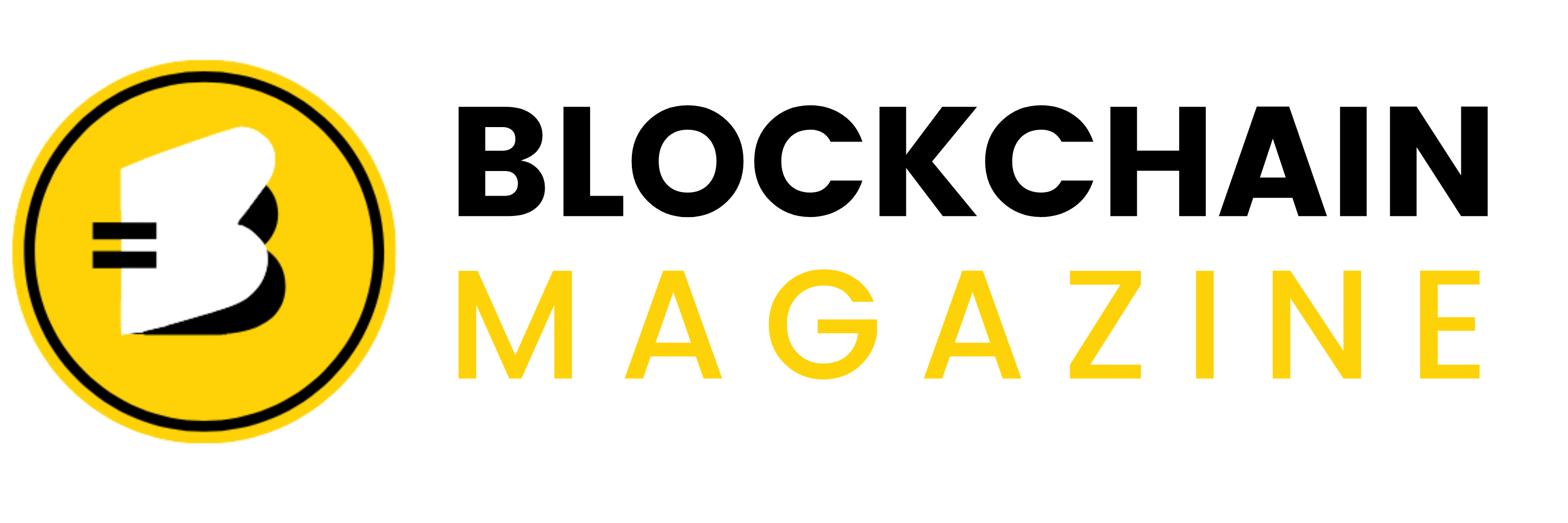
 Bitcoin
Bitcoin  Ethereum
Ethereum  XRP
XRP  Tether
Tether  Solana
Solana  USDC
USDC  Dogecoin
Dogecoin  Cardano
Cardano  Lido Staked Ether
Lido Staked Ether  TRON
TRON  Wrapped Bitcoin
Wrapped Bitcoin  Wrapped stETH
Wrapped stETH  Chainlink
Chainlink  Avalanche
Avalanche  Sui
Sui  Stellar
Stellar  Litecoin
Litecoin  Toncoin
Toncoin  Shiba Inu
Shiba Inu  Hedera
Hedera  LEO Token
LEO Token  MANTRA
MANTRA  USDS
USDS  Hyperliquid
Hyperliquid  Polkadot
Polkadot  WETH
WETH  Bitcoin Cash
Bitcoin Cash  Bitget Token
Bitget Token  Ethena USDe
Ethena USDe  Wrapped eETH
Wrapped eETH  Uniswap
Uniswap  Monero
Monero  NEAR Protocol
NEAR Protocol  Pepe
Pepe  WhiteBIT Coin
WhiteBIT Coin  Aave
Aave  Bittensor
Bittensor  Ondo
Ondo  Aptos
Aptos  Internet Computer
Internet Computer  Dai
Dai  Official Trump
Official Trump  Ethereum Classic
Ethereum Classic  Mantle
Mantle  Tokenize Xchange
Tokenize Xchange  OKB
OKB  Gate
Gate  sUSDS
sUSDS  Coinbase Wrapped BTC
Coinbase Wrapped BTC 
